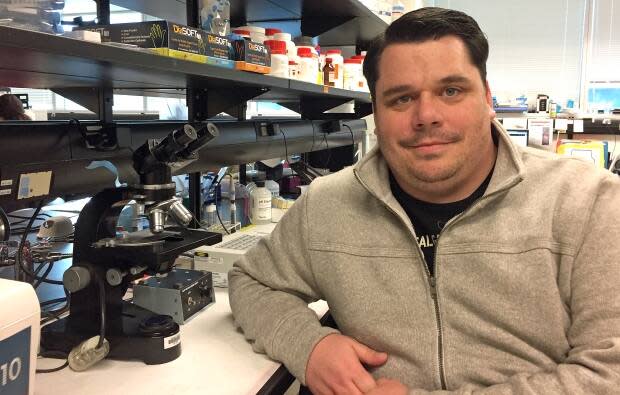Here we 'R': The key metric for whether Alberta will lift COVID-19 restrictions
As COVID-19 cases, hospitalizations and deaths continue to rise in Alberta, there is another number Albertans should be thinking about: the R-value.
The R-value is essentially the number of people infected by each infected person. It's known as the reproduction number, R-number, or simply as "R."
Last week, as Premier Jason Kenney announced new restrictions on gatherings and businesses, he also revealed that the R-value will be the key metric in determining whether those restrictions will be lifted on Dec. 18.
Kenney said then he would evaluate the restrictions on Dec. 15, and the province would need to have an R-value below 1.0 in order to lift the restrictions. Ideally, he said, the province would have a R-value of 0.8.
"That's the minimum metric goal that we must achieve by December the 15th," he said. "We must see the rate of transmission move below one. If we start to move it below one, then we know we have begun effectively to bend the curve."
An R-value of one means with each person with the illness only infects one other person. That would mean the number of infected people would be fairly consistent. Any number above one means case numbers will grow.
On Tuesday, Dr. Deena Hinshaw, the province's chief medical officer of health, said it had been "at least a month" since Alberta last saw an R-value of one. The metric is useful in understanding whether the restrictions were working, she said, though the impact of the measures announced last week wouldn't be seen until later this week at the earliest.
"As I said, that is one of the most important metrics right now," she said. "Because it does help us understand whether our actions are decreasing the curve enough to actually have that reduction in number of cases. Because that is the only way that we are going to be able to alleviate the pressure on the health-care system."
Hinshaw said that even if Alberta got to one and was able to hold case numbers steady "we would still see the current impact and pressure on the health-care system."
Alberta Health spokesperson Tom McMillan told CBC last week the provincial R-value as of Nov. 23 was 1.12. Though CBC asked for the information several times over numerous days, Alberta Health did not provide a more recent R-value for the province.
On Wednesday, Kenney said cabinet will discuss the possibility of publicly releasing the R-value, as well other metrics, at its next meeting. He said the provincial positivity rate is also and important metric that is publicly available.
That rate was 9.2 per cent on Wednesday, the highest level since the pandemic began.
Craig Jenne, associate professor in the department of microbiology, immunology and infectious diseases at the University of Calgary, said the R-value is an important marker but has limitations.
"Although we often see an R-value, for example, for the province of Alberta, it is likely not uniform across the province," said Jenne. "Just because Alberta may have an R-value of a certain amount, it doesn't mean all communities have that same R-value. Or more importantly, not all areas, even within a single community, would have the same R-value.
"It's a global measurement, but it can be over-interpreted and it may not reflect sort of what's happening at the ground level within specific environments in the province."

Jenne said the R-value only gives a limited view of the COVID-19 situation and has to be considered as part of the bigger picture.
"We can tolerate different R-values depending on what the overall health-care capacity is," he said. "So, if our health-care capacity has lots of of headroom, lots of open beds, lots of available staff, we can tolerate a slow growth in virus. Conversely, if we're already at the limits and we have started to strain or perhaps fully occupied most of our resources, we have much less tolerance for increased viral growth."
It's not yet known whether Alberta can bend the curve to get below an R-value of one, but Jenne said based on what has happened in other places that would be difficult.
"If we've looked at other areas, Ontario, Quebec and other parts of the world, where they've taken a more restrictive approach, we've actually seen in many cases it does not bring viral growth down to zero in a matter of two or three weeks," said Jenne. "It slows the growth, which is great, but viral cases in many of these jurisdictions continue to grow despite even more stringent lockdown than what we saw in Alberta.
Based on modelling from other jurisdictions, he said, it's not likely that Alberta's current restrictions will bring the R-number to one or below by the middle of December.

